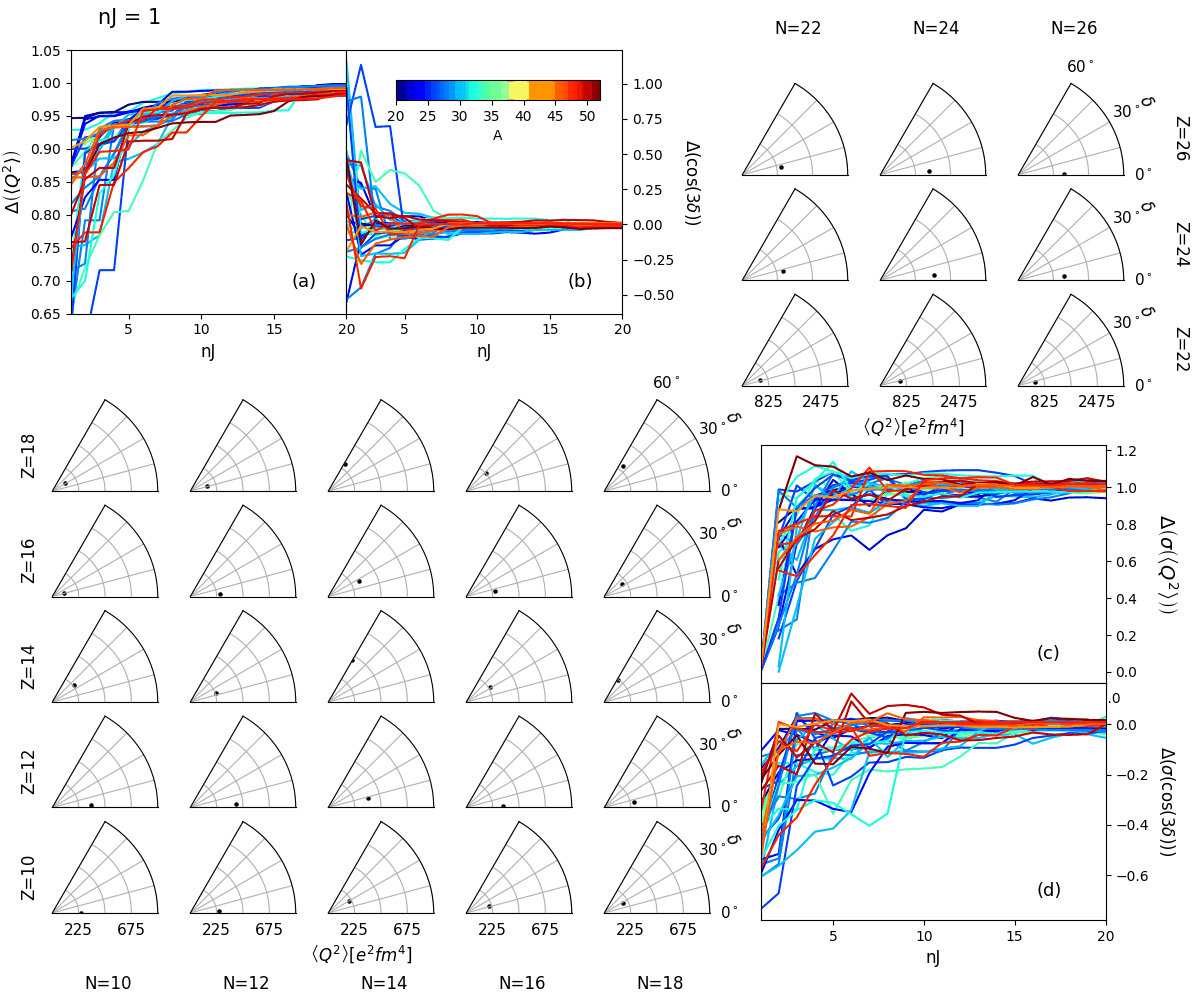Convergence
How much data do we need to know the shape of a nucleus?
All atomic nuclei tend to exhibit some kind of quadrupole deformation, typically observed in the form of fluctuations about the nuclear surface (vibrations) and/or rotations of a deformed object about one of its axes. We can try to determine how deformed a nucleus is by examining a number of properties and comparing it to models.
Alternatively, we can use properties of electromagnetism1 to try to access this deformation directly, without needing to compare to models. To do this experimentally we need, in principle, a near infinite amount of nuclear data - a major problem. In practice, however, certain nuclear data is likely to contribute most strongly.
Using a nuclear model2 and steadily increasing the amount of data used, we can attempt to work out how much data we need to be confident of a nucleus’s shape. The animation below shows the shape evolving as more states are included in the calculation, as well as how the parameters converge towards an answer.
This research was published in Physical Review C and can be found here.
